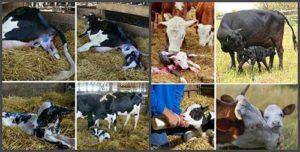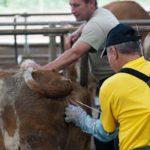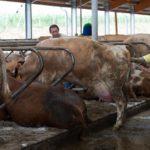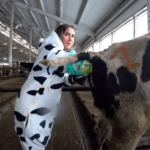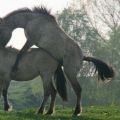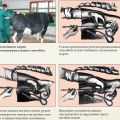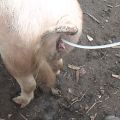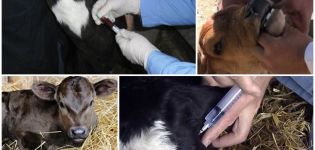How best to inseminate cows and choosing a method at home
Artificial insemination is a popular procedure, the demand for which is due to the high demand for meat and milk. Moreover, with a natural procedure, there is no guarantee of a stable increase in livestock. In addition, it often leads to traumatic injury or transmission of infections. Therefore, many farmers are interested in exactly how cows are inseminated. This procedure has different types and features.
When and how many times should artificial insemination be performed?
In order for the manipulation to be effective, it is important to follow the basic rules for its implementation and adhere to the number of procedures. When choosing the optimal physiological period, it is recommended to focus on the following features:
- Oocyte readiness for fertilization. This state is present for 10 hours. Then the egg cell ages, and its readiness for fusion disappears. Performing insemination at this time provokes various pathologies. To prevent such problems, the seed must enter the genital tract before the onset of ovulation.
- Physiological changes in which sperm are able to enter the egg.
- Sperm vitality parameters. With natural fertilization, the seed remains active for 2 days. When carrying out the procedure by an artificial method, this figure does not exceed 12 hours. Therefore, it is required to prepare for insemination 12 hours before the onset of ovulation.
Experts advise conceiving at 3 am. This is the most appropriate time for the procedure. But if hunting time comes in the morning, then insemination is carried out in the evening. The approximate time is 5-7 hours.
It is important to understand that many females have an active estrus for 20 hours. Semen should be injected a couple of hours before or after milking. During this period, milk delivery dominates the cow's brain. As a consequence, the uterus blocks the absorption of sperm. This makes it impossible to get the result.
When carrying out insemination, multiplicity is of no small importance. Sperm should be injected twice:
- for the first time, the procedure is carried out immediately from the moment the rut is detected;
- the next one - after 10 hours.
If the hunt does not end, it is recommended to inject sperm at intervals of 12 hours. Stop the procedure only after the completion of the characteristic symptoms.
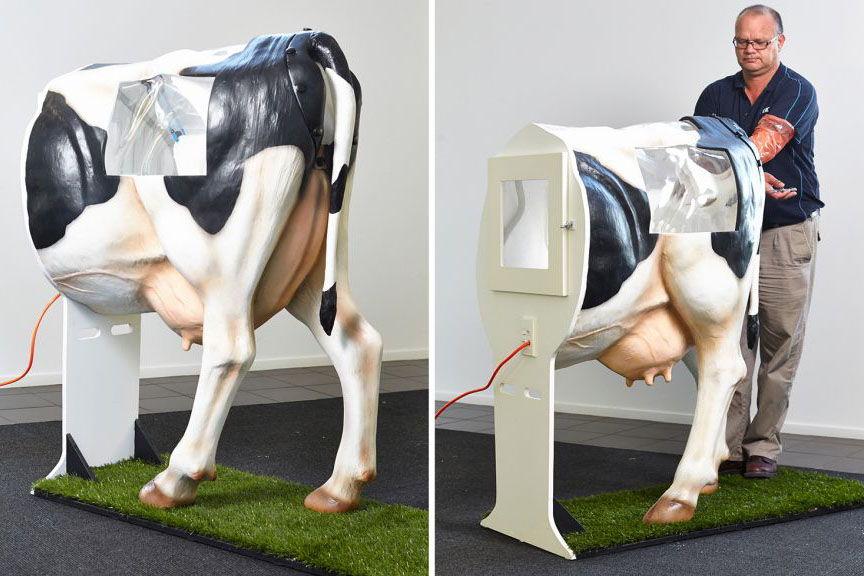
How to determine the start of the hunt
To understand the beginning of the hunt, it is worth observing the behavior of the animal. This is evidenced by the following signs:
- cow anxiety;
- constant mooing;
- looking around, stepping from foot to foot;
- decreased appetite;
- reflex of immobility;
- sniffing or licking the genitals;
- mucous discharge from the genitals.
Your veterinarian can examine your vagina. In this case, you can see its swelling and redness of the mucous membranes. The cervical canal opens slightly, and mucous discharge appears from it.
Choice of insemination method
Insemination can be carried out naturally or artificially. In the second case, the manipulation should be carried out by a zootechnician with the appropriate skills.
The methods of performing the procedure are varied. These include the following methods:
- visocervical;
- rectocervical;
- manocervical;
- epicervical technique.
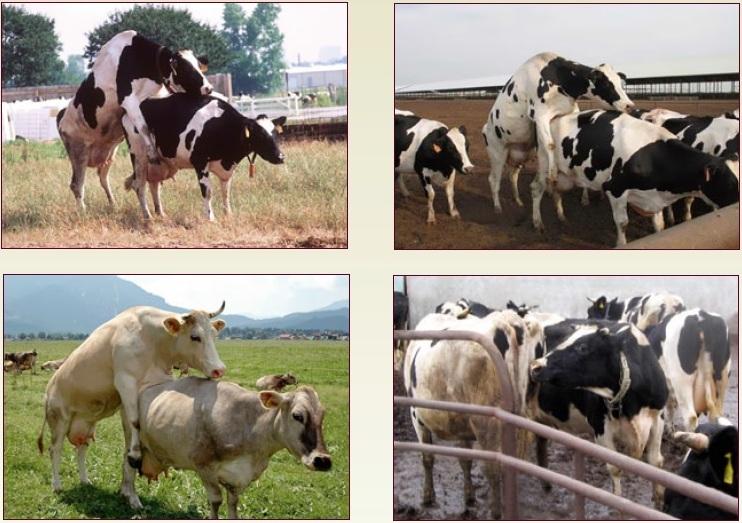
Required tools and equipment
If the herd does not have a fertilizer, artificial insemination may be performed. The manipulation should be performed in a special place. It should contain the following:
- arena;
- devices for washing;
- laboratory with materials and tools.
In this case, syringes, catheters, and a microscope should be in the laboratory. You also need special dishes. In the washing room there are containers for disinfection and special clothing.
Animal preparation
It is important to sanitize before starting insemination. Do not use aggressive means for this. It is better if the processing takes place with potassium permanganate.

It is recommended to clean the area near the anus from dirt. Then it is necessary to wash the back of the body with soapy water and rinse with "Furacilin". This helps to reduce the risk of infection of the cow during fertilization.
Carrying out the process
Cows are inseminated in a variety of ways. However, in any case, animals are fertilized by introducing semen through the cervix.
To inseminate a cow at home, you need to use the visocervical method. Before the start of the session, the specialist must use a microscope to determine the activity of the sperm.
For insemination it is recommended to do the following:
- Rinse the anus and vagina with "Furacilin".
- Disinfect the mirror and insert into the genital tract.
- Take semen and insert a catheter into the cervix.
- Pull out the tools.
The most popular method of fertilization is rectocervical. Insemination can be carried out directly in the stalls. To do this, it is recommended to do the following:
- To clear the intestines from feces.
- Rinse the genitals with "Furacilin".
- Treat the glove with soapy water and insert the hand into the anus.
- Feel the genitals to find the corpus luteum.
- With the other hand, push the genital gap apart.
- Insert the device and find the end of the catheter with your hand.
- Place it in the cervix and advance it 6-8 centimeters.
- Inject semen.
- Pull out the tool.
To carry out fertilization by the manocervical method, it is recommended to do the following:
- Put on gloves and treat them with a weak salt solution.
- Place your hand in the genital tract to assess uterine dilatation.
- Massage your vagina for a couple of minutes.
- Insert the catheter with sperm into the cervix, immersing it 7-8 centimeters.
- Pour semen into the cervix. It is recommended to do this at a time of complete relaxation. When contractions appear, you need to massage again.
It is recommended to pull out the arm very carefully so as not to damage the tissues and cause pain in the cow. Otherwise, the semen will leak, which will not lead to the desired results.
There is also an epicervical technique that most closely resembles real insemination. In this case, the sperm must be injected not into the uterus, but into the vagina or cervix. In this case, it is worth doing the following:
- To clear the intestines from feces.
- Rinse the genitals.
- Massage the clitoris.
- Insert your hand into the anus and massage the uterus.
- Place the catheter into the vagina and pour out the raw material.
- Pull out the tool.
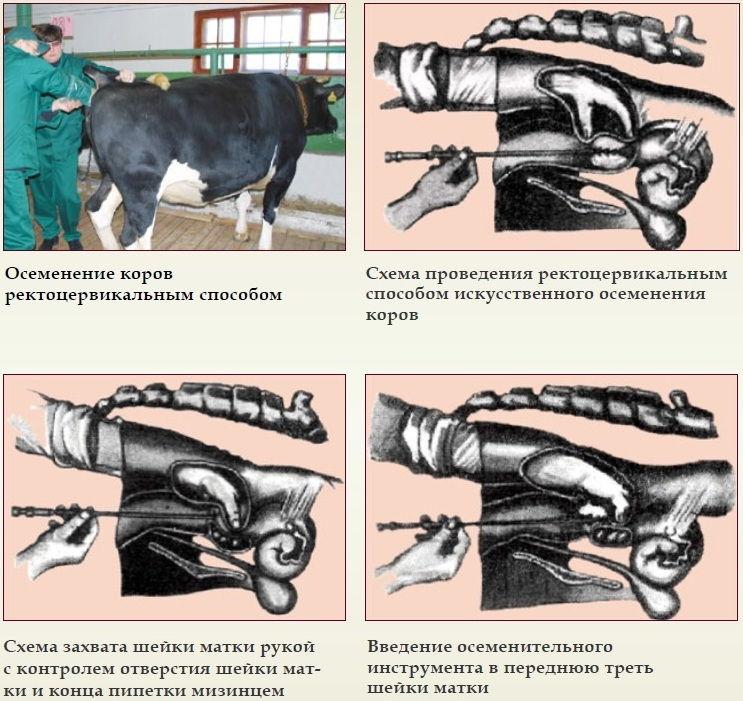
How to identify pregnancy
Conception should occur immediately after fertilization. Pregnancy can be determined by the rectal or vaginal method. However, a blood test is considered the most accurate method. It needs to be done 20-23 days after fertilization. An increase in progesterone levels indicates pregnancy. If this does not happen, you need to identify the causes and carry out treatment.
There are a number of ways to inseminate animals. In any case, a specialist should carry out the procedure. It requires compliance with the basic rules and recommendations. This will help to get the desired result without harm to the health of the animal.
